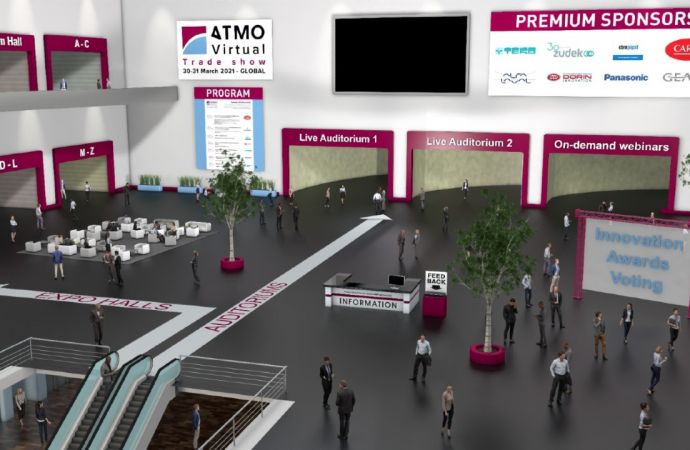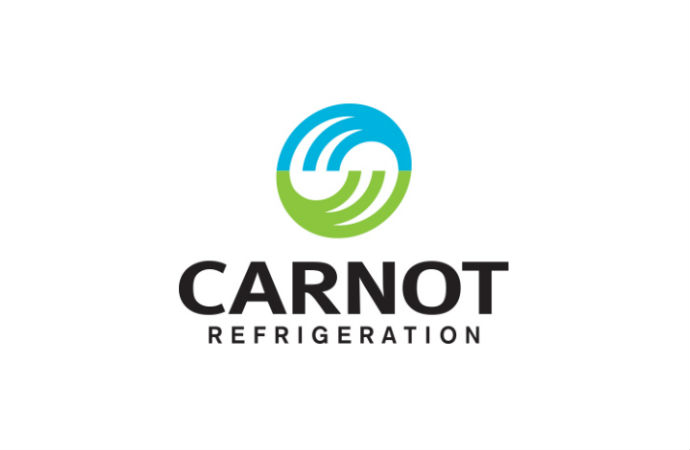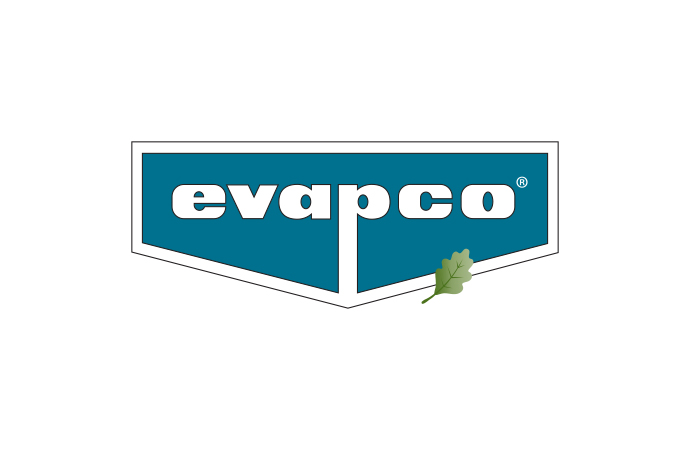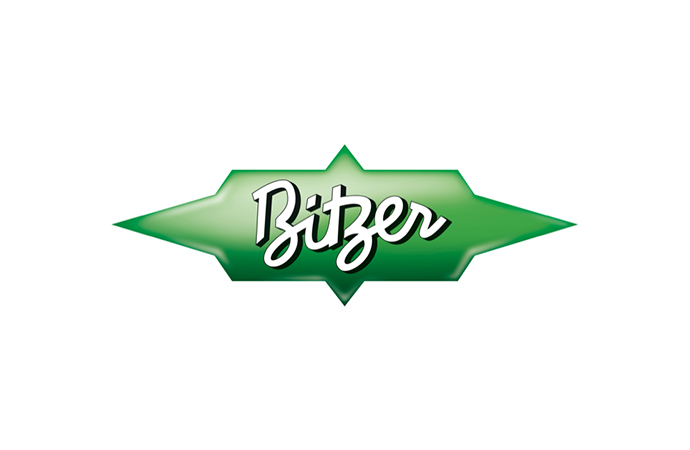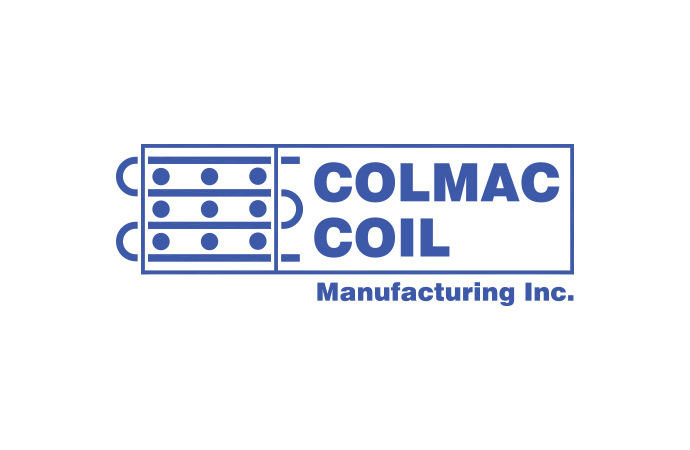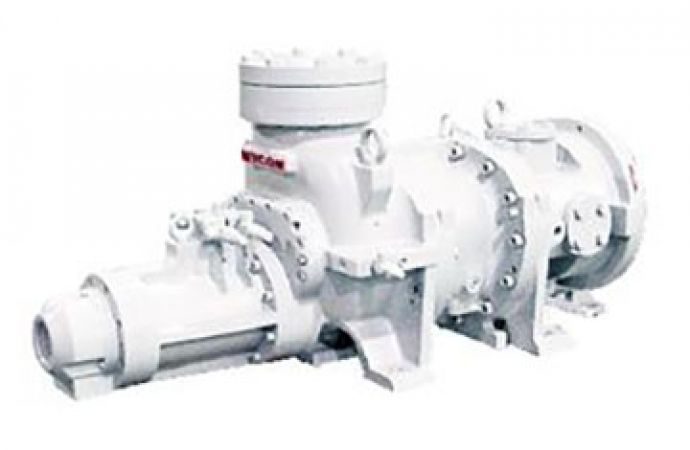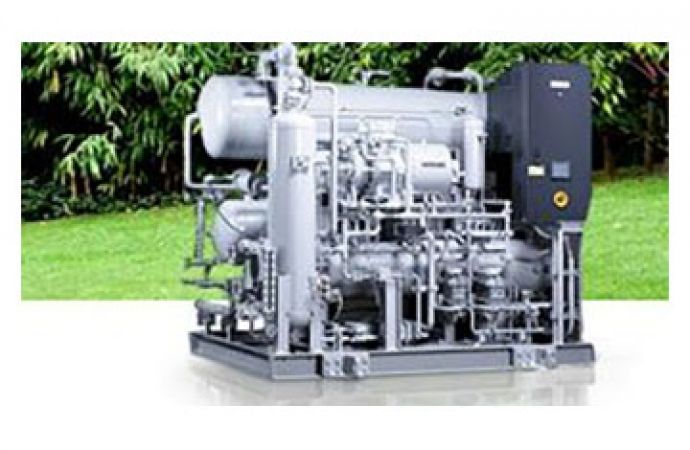The 3rd annual ATMOsphere America 2014 conference will exhibit NH3 focused technology case studies from Cimco, Star Refrigeration, Colmac Coil Manufacturing, Stellar & CRT Design, and VaCom Technologies. Reduced electricity consumption with a NH3 system at a meat plant, an air cooled NH3 package at a dairy facility, NH3 charge reductions at a public refrigerated warehouse, NH3 systems for cooling commercial/office buildings an

Taking place on 18 & 19 June in San Francisco, ATMOsphere America 2014 features several parallel technology case study sessions including Industrial Refrigeration & Other Applications, HVAC, Commercial Refrigeration and Heat pumps, where leading HVAC&R companies will present their latest natural refrigerant products and projects in North America.
Moving from Freon to Natural Refrigerant after a catastrophic fire by Benoit Rodier, Cimco
This project focuses on a meat packing plant in Viande Paquette in Quebec, Canada, which burned down in 2009. When rebuilding in 2011, the owner chose a central thermal plan including ammonia with glycol recirculation by Cimco Refrigeration. The central ammonia plan uses a booster ammonia compressor at -45°C which serves low temperature spiral freezers, blast freezer cells and a cold storage freezer. The second stage ammonia compressor cools a propylene glycol loop to maintain the medium temperature storage room between 4-10°C. In the mechanical room, 3 storage tanks were installed as ice batteries to store low temperature energy at night and supply all the air condition during the day. The heat rejection of the entire system is reclaimed in a secondary hot glycol loop at 35°C, providing heat for the entire building. The new system, for which the owner received a half million dollar grant, significantly reduced electricity consumption.
Low charge ammonia – the natural replacement for R22 by Derek Hamilton, Star Refrigeration
The case study will start with an update about the U.S. R22 phase-out and the effects this is having on the industry. It will present lessons learned in Europe from the R22 phase-out process and how these can be applied in the U.S., as well as options for end users after R22 and considerations that must be taken into account when moving away from R22 in large commercial or light industrial applications. The case study will also discuss the benefits of using air cooled as opposed to evaporative condensers. Finally, it will highlight a case study of a dairy facility in Puerto Rico, where the end user is investing in an air cooled ammonia package to replace an ageing R22 system.
Reducing Ammonia Charge Below 10,000 lbs in a Newly Constructed Public Refrigerated Warehouse by Bruce I. Nelson, Colmac Coil Manufacturing
Traditionally, industrial ammonia refrigeration systems have used pumped recirculation to distribute refrigerant to evaporators. This type of system while offering a number of operational benefits also uses the maximum possible system charge, in the range of 25 to 30 lbs/TR. New Low Charge DX Ammonia technology allows for the use of direct expansion (DX) to reduce the ammonia charge in evaporators by as much as 50 times and system charge to the range of 5 to 6 lbs/TR. A new 400,000 sq ft Public Refrigerated Warehouse has been built in the Midwest USA, which utilises this new Low Charge DX Ammonia technology to achieve over 1,000 Tons of refrigeration with only 7,000 lbs ammonia on the site. By comparison a traditional pumped ammonia system would require approximately 30,000 lbs of ammonia to operate the system. Most of the reduction in the ammonia charge takes place in the occupied spaces of the facility, which reduces the risk of exposure to ammonia for both workers and products. The case study will review system specifications, ammonia charge reduction, first cost comparison, and lessons learned.
Industrial Ammonia Systems used for cooling in commercial/office buildings by Luke Facemyer, Stellar and Chuck Taylor, CRT Design
This case study includes three recent, distinct projects utilising an industrial ammonia system to provide cooling to office/commercial spaces. The first project is a large Greenfield food processing plant in which the ammonia system was expanded in order to also serve 20,000 sq ft of office space. The second project utilises both ammonia and CO2 systems to cool a mixed-use building. The third project is a retrofit project where several conventional HVAC units were removed from a commercial building and replaced with an ammonia system. Energy and cost analysis will be presented for each of the three projects.
Comparative Energy and Emissions Performance of a Natural Refrigerants System (CO2/NH3) versus an HFC System (R-507) in an Industrial Refrigerated Warehouse by Rafael Castillo, VaCom Technologies
Extensive measured performance data was collected for a large industrial carbon dioxide and ammonia cascade refrigeration system, as part of an earlier emerging technologies project funded by PG&E to demonstrate the energy efficiency, safety, and regulatory benefits of the Cascade CO2/NH3 system compared to a more conventional refrigeration system. The purpose of this 2014 case study was to subsequently compare the actual measured efficiency of the Cascade CO2/NH3 system against the calculated efficiency of an HFC-507 refrigeration system, operating at the same refrigeration loads and process temperatures. The original project included field installed instrumentation and data acquisition equipment to monitor and evaluate the real-time performance of the refrigeration plant in a public refrigerated warehouse (PRW) in California.
About ATMOsphere America 2014
18 – 19 June at The Westin Market Street in San Francisco, California
The 3rd annual ATMOsphere America 2014 brings together around 250 HVAC&R industry stakeholders, including leading end users and consumer goods brands, system and component suppliers, government representatives, associations and more, to discuss the latest developments in the natural refrigerant industry. This year, the conference will feature several parallel technology case studies sessions focusing on topics in industrial, transport and commercial refrigeration, HVAC, heat pumps and more. Participants also have the opportunity to attend an optional Napa Valley Wine Tour combined with a site visit.
Moving from Freon to Natural Refrigerant after a catastrophic fire by Benoit Rodier, Cimco
This project focuses on a meat packing plant in Viande Paquette in Quebec, Canada, which burned down in 2009. When rebuilding in 2011, the owner chose a central thermal plan including ammonia with glycol recirculation by Cimco Refrigeration. The central ammonia plan uses a booster ammonia compressor at -45°C which serves low temperature spiral freezers, blast freezer cells and a cold storage freezer. The second stage ammonia compressor cools a propylene glycol loop to maintain the medium temperature storage room between 4-10°C. In the mechanical room, 3 storage tanks were installed as ice batteries to store low temperature energy at night and supply all the air condition during the day. The heat rejection of the entire system is reclaimed in a secondary hot glycol loop at 35°C, providing heat for the entire building. The new system, for which the owner received a half million dollar grant, significantly reduced electricity consumption.
Low charge ammonia – the natural replacement for R22 by Derek Hamilton, Star Refrigeration
The case study will start with an update about the U.S. R22 phase-out and the effects this is having on the industry. It will present lessons learned in Europe from the R22 phase-out process and how these can be applied in the U.S., as well as options for end users after R22 and considerations that must be taken into account when moving away from R22 in large commercial or light industrial applications. The case study will also discuss the benefits of using air cooled as opposed to evaporative condensers. Finally, it will highlight a case study of a dairy facility in Puerto Rico, where the end user is investing in an air cooled ammonia package to replace an ageing R22 system.
Reducing Ammonia Charge Below 10,000 lbs in a Newly Constructed Public Refrigerated Warehouse by Bruce I. Nelson, Colmac Coil Manufacturing
Traditionally, industrial ammonia refrigeration systems have used pumped recirculation to distribute refrigerant to evaporators. This type of system while offering a number of operational benefits also uses the maximum possible system charge, in the range of 25 to 30 lbs/TR. New Low Charge DX Ammonia technology allows for the use of direct expansion (DX) to reduce the ammonia charge in evaporators by as much as 50 times and system charge to the range of 5 to 6 lbs/TR. A new 400,000 sq ft Public Refrigerated Warehouse has been built in the Midwest USA, which utilises this new Low Charge DX Ammonia technology to achieve over 1,000 Tons of refrigeration with only 7,000 lbs ammonia on the site. By comparison a traditional pumped ammonia system would require approximately 30,000 lbs of ammonia to operate the system. Most of the reduction in the ammonia charge takes place in the occupied spaces of the facility, which reduces the risk of exposure to ammonia for both workers and products. The case study will review system specifications, ammonia charge reduction, first cost comparison, and lessons learned.
Industrial Ammonia Systems used for cooling in commercial/office buildings by Luke Facemyer, Stellar and Chuck Taylor, CRT Design
This case study includes three recent, distinct projects utilising an industrial ammonia system to provide cooling to office/commercial spaces. The first project is a large Greenfield food processing plant in which the ammonia system was expanded in order to also serve 20,000 sq ft of office space. The second project utilises both ammonia and CO2 systems to cool a mixed-use building. The third project is a retrofit project where several conventional HVAC units were removed from a commercial building and replaced with an ammonia system. Energy and cost analysis will be presented for each of the three projects.
Comparative Energy and Emissions Performance of a Natural Refrigerants System (CO2/NH3) versus an HFC System (R-507) in an Industrial Refrigerated Warehouse by Rafael Castillo, VaCom Technologies
Extensive measured performance data was collected for a large industrial carbon dioxide and ammonia cascade refrigeration system, as part of an earlier emerging technologies project funded by PG&E to demonstrate the energy efficiency, safety, and regulatory benefits of the Cascade CO2/NH3 system compared to a more conventional refrigeration system. The purpose of this 2014 case study was to subsequently compare the actual measured efficiency of the Cascade CO2/NH3 system against the calculated efficiency of an HFC-507 refrigeration system, operating at the same refrigeration loads and process temperatures. The original project included field installed instrumentation and data acquisition equipment to monitor and evaluate the real-time performance of the refrigeration plant in a public refrigerated warehouse (PRW) in California.
About ATMOsphere America 2014
18 – 19 June at The Westin Market Street in San Francisco, California
The 3rd annual ATMOsphere America 2014 brings together around 250 HVAC&R industry stakeholders, including leading end users and consumer goods brands, system and component suppliers, government representatives, associations and more, to discuss the latest developments in the natural refrigerant industry. This year, the conference will feature several parallel technology case studies sessions focusing on topics in industrial, transport and commercial refrigeration, HVAC, heat pumps and more. Participants also have the opportunity to attend an optional Napa Valley Wine Tour combined with a site visit.
MORE INFORMATION
Related stories


